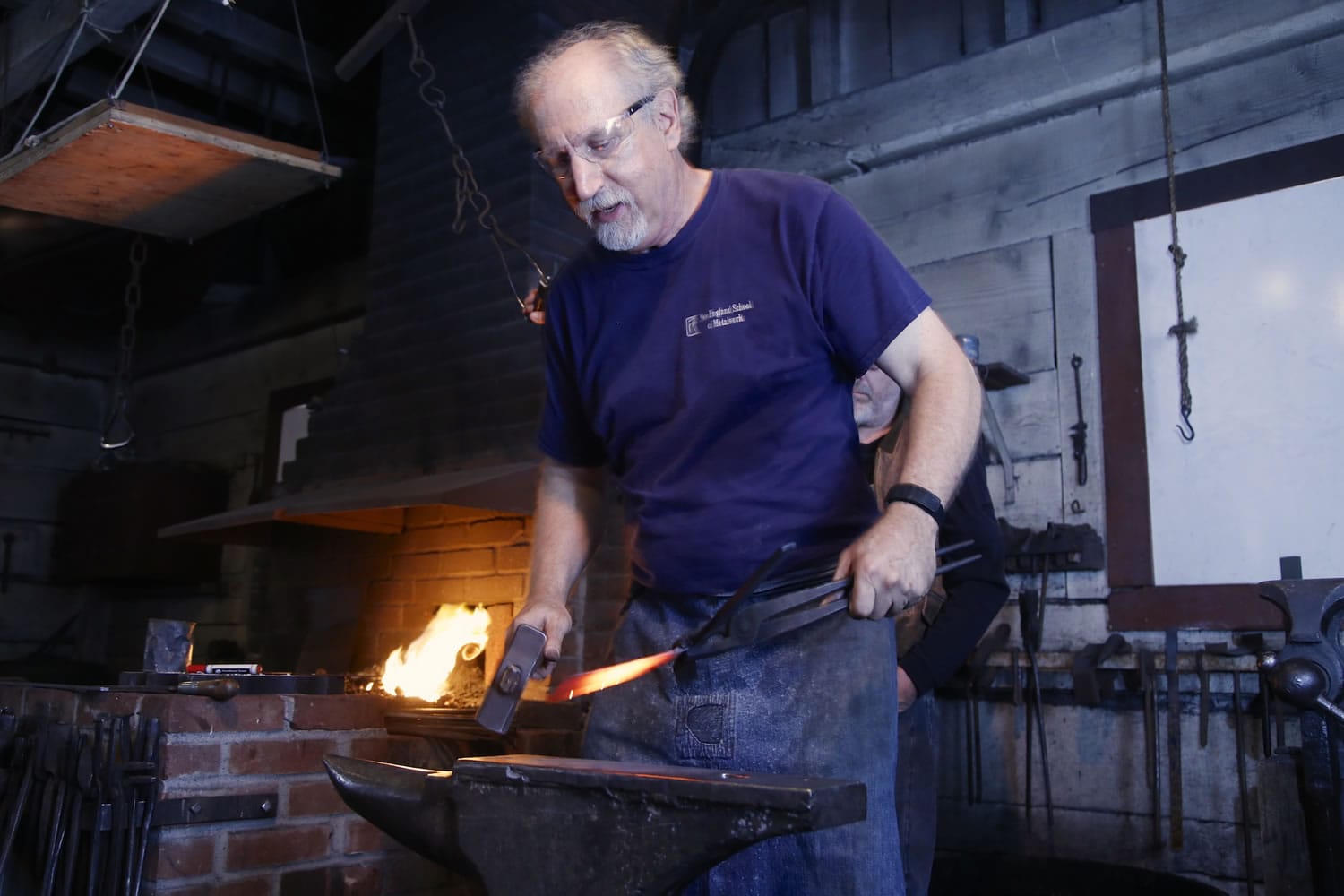Walking through the small historic garden to the entrance of Fort Vancouver, you realize: With 1,500 acres of vegetables once under cultivation there, those Hudson’s Bay Co. gardeners must have needed some rakes.
But where to get one, more than a century before Hi-School Hardware, Home Depot or Lowe’s?
In the reconstructed fort’s blacksmith shop stands Jay Close, a master craftsman holding tongs and glowing metal with one hand, and a hammer with the other. In the span of a few hours, he’ll make that rake.
Close, who lives near Charlotte, N.C., spent the weekend at the fort, offering tips of his venerable trade to a small group of volunteer blacksmiths and a couple of people who were just interested in how it all works.





